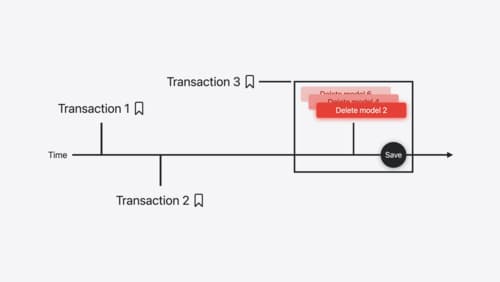how to learn swift data
Asked on 2024-08-05
1 search
To learn about Swift Data, you can explore several sessions from WWDC 2024 that cover different aspects of the framework. Here are some key sessions and their relevant chapters:
-
- Introduction: Overview of Swift Data and its capabilities.
- Adopt SwiftData: How to integrate Swift Data into your app.
- Customize the schema: Using the schema macro to avoid duplicate models.
- History API: Tracking changes in your data store.
- Tailor a model container: Setting up and configuring model containers.
- Custom data stores: Implementing support for any persistence backend.
- Customize queries: Optimizing queries with complex filters and macros.
-
- Swift Data: Introduction to Swift Data's syntax and modeling capabilities, including new features like indexing and unique constraints.
-
Create a custom data store with SwiftData
- Example store: How to adopt a custom store in Swift Data and implement the datastore protocol.
-
Track model changes with SwiftData history
- Custom stores: How to support history tracking in custom stores.
These sessions provide a comprehensive overview of Swift Data, from basic adoption to advanced customization and optimization techniques.

What’s new in Swift
Join us for an update on Swift. We’ll briefly go through a history of Swift over the past decade, and show you how the community has grown through workgroups, expanded the package ecosystem, and increased platform support. We’ll introduce you to a new language mode that achieves data-race safety by default, and a language subset that lets you run Swift on highly constrained systems. We’ll also explore some language updates including noncopyable types, typed throws, and improved C++ interoperability.

Track model changes with SwiftData history
Reveal the history of your model’s changes with SwiftData! Use the history API to understand when data store changes occurred, and learn how to use this information to build features like remote server sync and out-of-process change handing in your app. We’ll also cover how you can build support for the history API into a custom data store.

What’s new in SwiftData
SwiftData makes it easy to add persistence to your app with its expressive, declarative API. Learn about refinements to SwiftData, including compound uniqueness constraints, faster queries with #Index, queries in Xcode previews, and rich predicate expressions. Join us to explore how you can use all of these features to express richer models and improve performance in your app. To discover how to build a custom data store or use the history API in SwiftData, watch “Create a custom data store with SwiftData” and “Track model changes with SwiftData history”.
